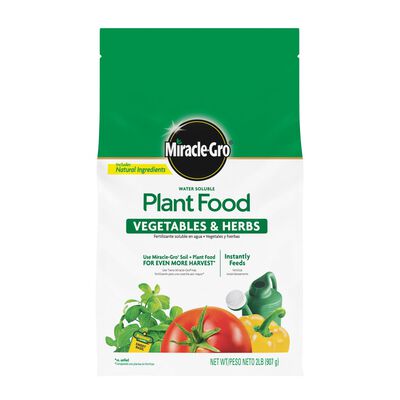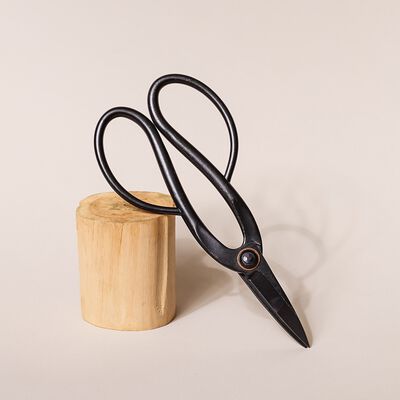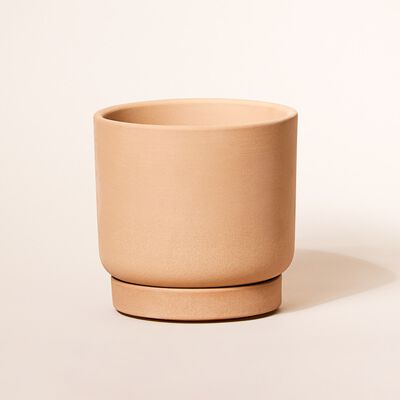
Your Guide To: Sage
Everything you need to know to care for this savory potted herb.
One whiff of sage may evoke warm memories of big holiday meals, where this unique, fragrant herb is often centerstage, but its flavors far exceed the Thanksgiving table. Fresh or dried, sage can play a starring role in a variety of dishes and cuisines, including sauces, poultry, pork, sausage, beans, risottos, and winter squash.
With its musky, almost minty fragrance and its velvety gray-green leaves, your sage plant will soften up any space and provide you with fresh flavor options to enhance and expand your cooking repertoire.
How to Keep a Sage Plant Happy
How Much Lighting Does a Sage Plant Need?
Sage loves the sun. This plant will be happiest and most productive on a sunny windowsill where it can enjoy direct sunlight for six to eight hours. South-facing and west-facing windows are usually great options. If your sage plant doesn’t seem to be getting enough light, you can add a fluorescent lamp or even a grow light to its environment to help.

How Do I Know When To Water My Sage Plant?
Sage likes well-drained soil. Let it get fairly dry between waterings. Use your finger to test. If the top inch or two of soil is dry to the touch, it's time to water. If you'd rather take the guesswork (and your finger) out of it, use a plant moisture indicator from our shop.
To water, use a small container or watering can to pour water out slowly, directly onto the soil, moving in a clockwise motion to evenly water the plant's roots. Be sure to dump any extra water that drips into the tray at the bottom of your plant so the roots don't sit in it.
How Do I Use Plant Food for My Sage Plant?
Plant food is an important part of fostering healthy growth and new leaves as your plant settles into its new digs.
For a kitchen-sized sage plant in a container that's 5-7 inches in diameter, insert the number of plant food spikes (included with your Greendigs plant purchase) indicated in the directions into the soil once every month during spring and summer. In fall and winter your sage plant's growth will slow down so you only need to feed it every two months. Yes, even though your plant lives inside, it still experiences the seasons.
What Is a Sage Plant's Ideal Environment?
Sage plants do well when they can absorb water from the air. Misting your sage plant a few times a week is also beneficial.
Good air flow around your sage plant is important to prevent mildew. You may want to occasionally thin out the plant to make sure it has good air circulation. For the best growth, keep the average room temperature in your home between 65 and 75 degrees, and keep your sage plant out of drafty areas.
How Do I Prune and Maintain My Sage Plant?
Your Greendigs sage plant is fairly low-maintenance. It benefits from occasional pruning. Trimming off the top of the plant encourages new growth and a bushier, more compact plant. Keep a pair of pruning shears on hand and this job will be a little easier.
Each time you water your sage plant, rotate the container a quarter turn. This way you'll make sure it gets the same amount of light on all sides. Our plant trivet set makes this easy and stylish, too.
How Do I Harvest My Sage Plant?
For the freshest, best-tasting results, snip the largest leaves off the lower part of your plant right when you're ready to use them. Be sure not to harvest more than one-third of the plant at a time. You can also keep fresh cut sage leaves in the refrigerator for up to five days if the leaves are wrapped in a slightly damp paper towel inside a loosely closed plastic bag. If you need longer storage, dry out your sage by gathering the 6" stems in a bunch and hanging them upside down in a dark, warm space with low humidity or using a food dehydrator, then storing them in an airtight container.
For a little extra help in the kitchen, try using our Pull and Pinch Herb Harvester to quickly and easily separate the leaves from their stems.
How to Address Common Sage Plant Issues
- Yellow, brown, or black drooping leaves may mean your sage is overwatered (if you've watered it in the last couple days). If this happens, stop watering and make sure your sage plant is in a sunny spot where it can dry quickly.
- If you've recently brought in other houseplants, keep an eye on your sage for whiteflies, aphids, and spider mites. A damp cloth or a stream of water from a garden hose can be used to knock them off.
What to Do If You Still Have Questions
If your sage plant doesn't seem to feel at home in your space, we're here to help. Chat live with a Greendigs representative on our website or shoot us an email at [email protected].


